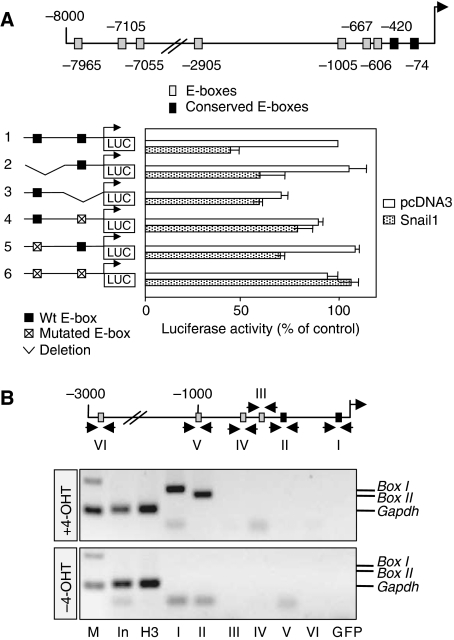Figure 6.
Snail1 is a direct repressor of Runx2 transcription. (A) Diagram of the 8-kb region upstream of the translational initiation site in the mouse Runx2 gene showing the putative sites for Snail1 binding (E-boxes). Two of these boxes are conserved in the human (black squares). Luciferase reporter constructs carrying the wild-type Runx2 promoter or deletions/mutations in the two conserved E-boxes were assayed in osteoblasts together with either the mouse Snail1 expression vector or an empty vector as a control (pcDNA3). Luciferase activity was measured 24 h after transfection, and the activity was expressed relative to that of the wild-type construct. The results are expressed as the mean values±s.e. of duplicates from four independent experiments. Snail1 repressed the activity of the wild-type Runx2 promoter, but it did not affect the promoter constructs in which the most proximal conserved E-box was deleted or mutated. (B) Chromatin immunoprecipitation (ChIP) assays carried out in osteoblasts differentiated from Snail1-ER transgenic mice confirm that Snail1 only binds to these two conserved proximal E-boxes and only on tamoxifen administration. M, fragment length markers; In (the input material), immunoprecipitation positive control H3 (sample immunoprecipitated with anti-H3 antibody) and immunoprecipitation negative control GFP (sample immunoprecipitated with anti-GFP antibody) were tested with GAPDH primers. The input material was also tested for each primer set corresponding to the fragments containing all the putative binding sites (see Supplementary Figure 7).

